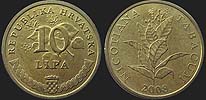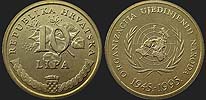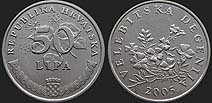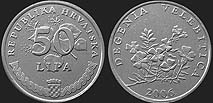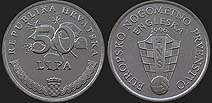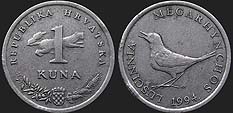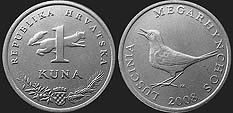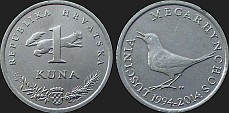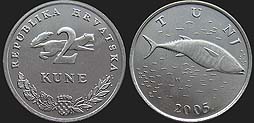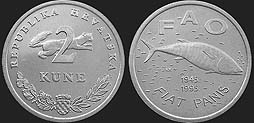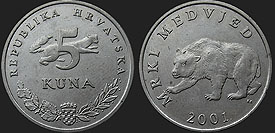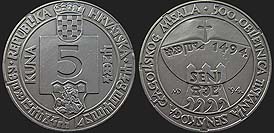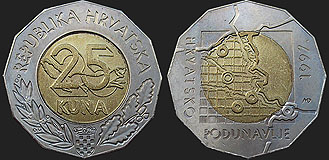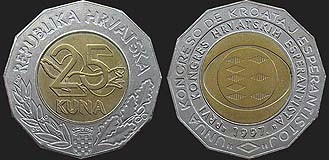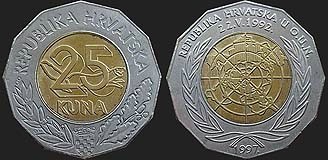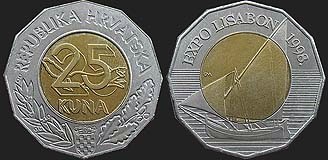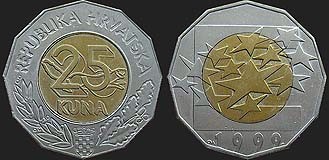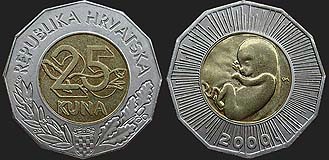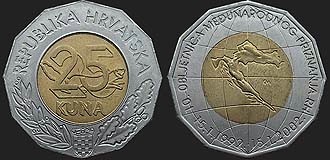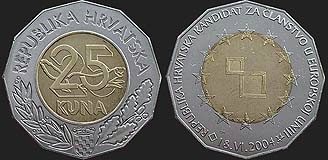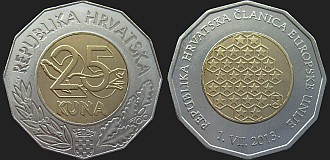CROATIA (from 1994) - Croatian kuna [HRK]
1 kuna = 100 lipa
Young Croatian country after regaining independence issued baknotes of Croatian dinar [HRD], which replaced Yugoslavian dinar [YUN] et par. The banknotes printed with a date of October 3, 1991 entered circulation on December 23 that year. The domestic war was destabilising the currency and the inflation forced to print banknotes of increasing face values. The Ministery of Finances prepared a project of a monetary reform aiming to heal the national market. On May 30, 1994 the Croatian kuna [HRK] was issued and the first coins of independent Croatia entered circulation. Kuna was exchanged for 1000 Croatian dinars [HRD]. The name of the currency (literally "marten" - Martes sp.) comes from the most important medevial Croatian export goods, which were marten furs. Around the year 1018 the town of Osor on Croatian island Cres, which was paying a tribute to Venice in the amount of 40 marten furs yearly, issued silver coins with an image of a marten, which were supposed to replace the payment in furs. Since then the animal was appearing on Croatian coins until 13th century.
Denar of Joachim Pectari (1270-1272).
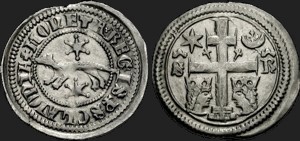
Also the puppet government of Croatia in 1941-1945 introduced the name kuna [HRC] for the currency pegged to German mark [DER] in ratio 40 HRC : 1 DER. One kuna was then subdivided into 100 banica (name of a currency issued firstly by ban (master) Stjepan in 1235). The modern Croatia did not want to relate to a shameful part of Croatian World War 2 history and subdivided a kuna into 100 lipa (literally "linden tree" - Tilia sp.). The reverses of Croatian kuna coins depict spieces of Croatian fauna and flora described in Croatian in odd years of issue and in Latin in even issue years.
coins catalogue :: katalog monet :: münzkatalog :: catalogue de monnaies :: catálogo de monedas :: catalogo monete :: каталог монет :: κέρματα κατάλογος :: COINZ.eu
© 2010-2025 :: Adam Kubicki :: COINZ.eu :: All rights reserved.










